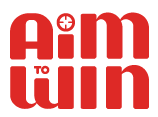Jack sat across from Diane, the CEO of a growing tech company, reviewing the notes from the interviews he’d conducted. “You’ve got a strong sense of where your workforce stands in terms of vitality,” Jack said. “The next step is to make sure that you have a culture that supports and strengthens it.”
Diane nodded a typically confident CEO nod. “We talk a lot about culture here. Collaboration, innovation, empathy—they’re all in our mission statement. But the feedback seems to tell a different story.” She scratches her head, wondering if they are all a bunch of liars.
“That’s not surprising,” Jack replied. “Your company culture isn’t your mission statement. It’s what people actually experience. And that experience is filtered through two things: leadership and the unique journeys of your employees.”
The Leadership Filter
“Let’s start with leadership,” Jack said, putting on his smart-looking glasses and pulling up notes from his interviews with Diane’s team. “When it comes to culture, your employees’ reality is shaped by your leaders. They model it—intentionally or not.”
Diane raised an eyebrow suspiciously. “What did you hear in the interviews?”
Jack flipped to a page in his somewhat fancy binder. “Here are a few things that stood out:
One employee said, ‘We talk about collaboration all the time, but our leaders don’t really work together. Each department just does their own thing.’ If leaders operate in silos, employees follow their example, and collaboration falls apart.”
Diane frowned. “That’s definitely not what we want.”
Jack continued, “Another said, ‘I’ve stopped sharing new ideas because when I made a mistake last year, I got chewed out in front of everyone. It’s not worth the risk.’ If your company values innovation but punishes mistakes, employees will avoid taking risks, and innovation dries up.”
Diane nodded slowly. “That tracks with some of the feedback we’ve seen.”
“And here’s one more,” Jack added. ‘Our company says empathy is important, but I’ve never had a one-on-one meeting with my manager where they asked how I was doing. It feels like I’m just a number.’”
Diane sighed. “So, if the culture isn’t where we want it, I need to start by looking at what our leaders are modeling?”
“Exactly,” Jack said, in his best authoritative consultant voice. “Leadership sets the tone. If there’s a gap between what leaders say and what they do, trust and engagement–workforce vitality even, start to erode.”
The Employee Journey Filter
“Once culture passes through leadership,” Jack continued, “it’s then filtered through the lens of your employees’ individual journeys. Your workforce is not one entity. Each person brings their own background, values, and challenges to the workplace.”
Diane tilted her head. “What do you mean, can you give me examples?”
Jack flipped through more notes. “Here are a few examples:
- When asked about the flexible work policy, A working parent said, ‘I love the flexibility, it helps me balance my home life with my office life.’
- Another employee shared a different perspective: ‘I miss the camaraderie of being in the office every day. When people work from home, it feels like we’re not as connected as a team.’
Diane nodded. “So, even though flexibility is a part of our culture, not everyone experiences it the same way.”
“Exactly, because they are on different personal journeys” Jack said. “It’s the same with onboarding.” He pointed to another note.
- ‘When I joined, there was no onboarding plan. I felt like I was just thrown into the fire,’ one employee had said. ‘I’ve adjusted, but it was a tough start.’
- On the flip side, a seasoned veteran remarked, ‘I liked the lack of structure during onboarding—it made me feel like the company trusted me to figure things out on my own.’
Diane leaned back, processing the feedback. “So, one person feels unsupported, and another feels empowered by the exact same process.”
Jack nodded. “That’s the key to the employee journey filter. Culture isn’t one-size-fits-all. People experience it differently based on their roles, needs, and personal journeys.”
Bridging the Gap
Diane leaned forward. “What can I do to close the gap between the culture we want and the one our employees are living?”
Jack offered three strategies:
- Teach Your Leaders: Equip them with the tools to model empathy, accountability, and trust. Hold them accountable for not just results, but how they achieve them.
- Make Feedback a Habit: Regularly create opportunities for employees to share their experiences. Use their input to identify gaps and guide improvement.
- Understand Individual Journeys: Recognize that your workforce isn’t a monolith. Engage employees as individuals and adapt to their needs.
The Bottom Line
“Culture is a living, breathing thing,” Jack said. “It’s shaped by your leaders’ actions and your employees’ perceptions in real time. What you say matters, but what you do…and how your team experiences it… matters more.”
Diane nodded. “Okay, let’s start with our leaders. If we’re not living the culture we want, how can we expect our employees to believe in it?”
Jack smiled. “Exactly. Leadership sets the tone, but listening to your people keeps you on track.”
PS. I recently launched a YouTube channel designed to help leaders like you create high-performing, engaged teams. It’s packed with insights on leadership, culture, business—the exact tools you need!
